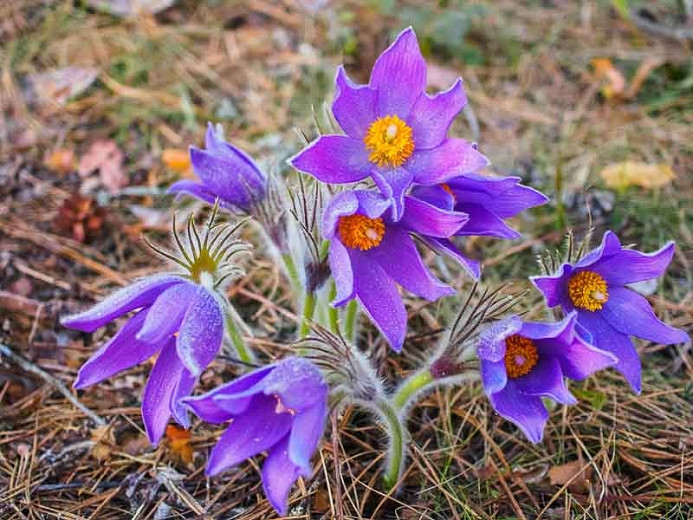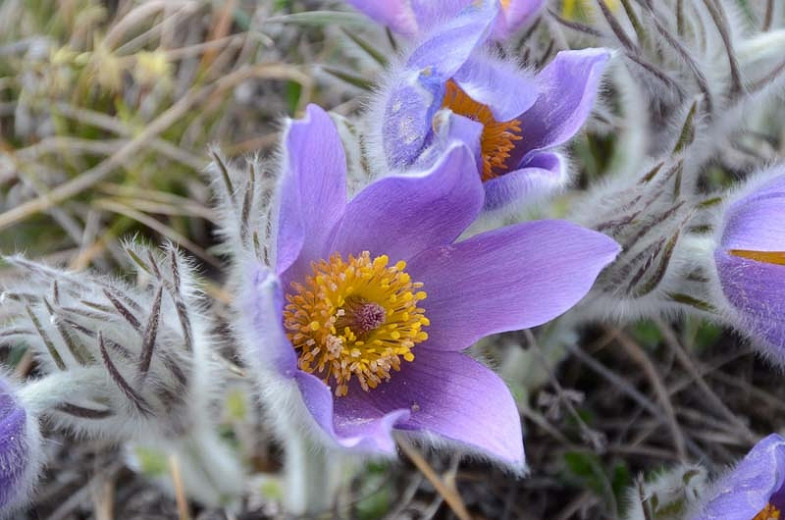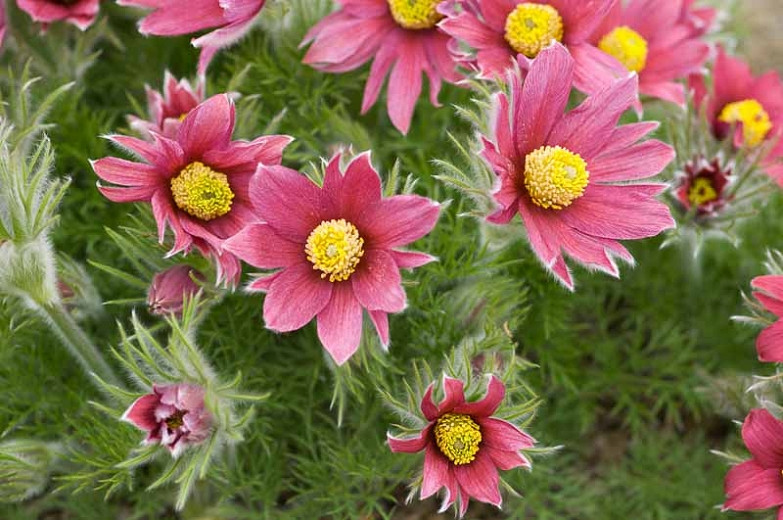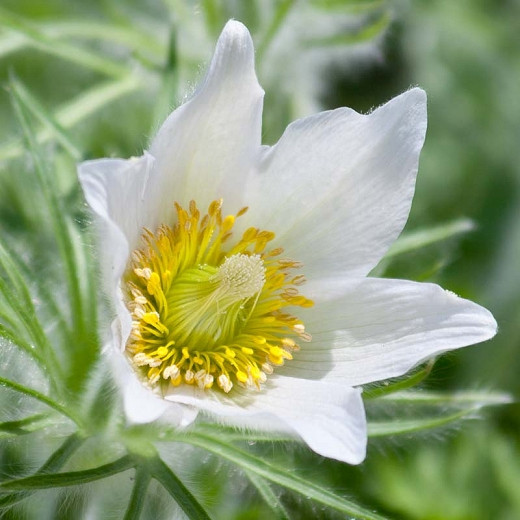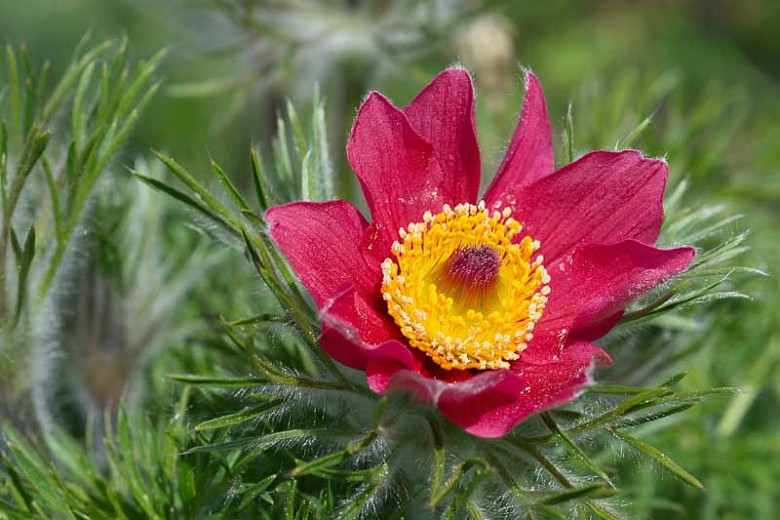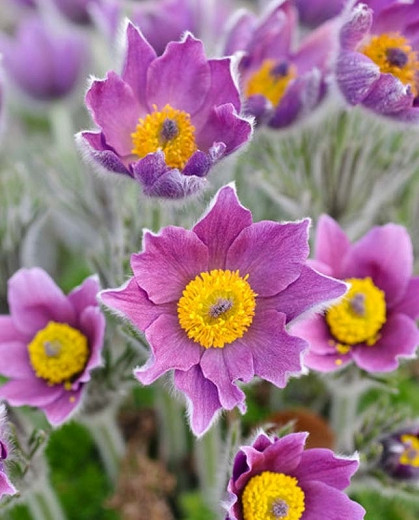Pulsatilla vulgaris subsp. grandis (Greater Pasque Flower)
Pulsatilla vulgaris subsp. grandis (Greater Pasque Flower) is a clump-forming perennial boasting dense clusters of large purple flowers, up to 4 in. (9 cm), on short stems in early spring. The attractive blossoms contrast beautifully with the luminous boss of golden yellow stamens. They are followed by equally ornamental, plume-like seedheads (resembling those of clematis) in fluffy spherical clusters. Emerging after the flowers, the foliage of very finely divided leaves is covered in silky, silvery hairs. It remains attractive throughout the growing season. Pasque Flowers will seed themselves all over, if you are lucky, then go summer dormant. Enjoying a long season of interest, these low-growing plants are suitable for rock gardens or the front of the perennial border. They combine well with spring-flowering bulbs and ground covers.
- Grows up to 6-9 in. tall and wide (15-22 cm).
- Thrives in full sun in well-drained soils. Good drainage is essential to survival. Resents disturbance and can be hard to establish.
- Easy to grow, Pasque Flower is a good choice for areas of the garden that are sunny and dry.
- No serious insect or disease issues.
- Excellent addition to sunny border fronts, rock gardens or alpine beds.
- Can cause stomach irritation if eaten.
- Propagate by seed or take root cuttings in the winter
- Native to central Europe, Ukraine.
Requirements
| Hardiness | 5 – 7 |
|---|---|
| Heat Zones | 5 – 7 |
| Plant Type | Perennials |
| Plant Family | Pulsatilla – Pasque Flowers |
| Exposure | Full Sun |
| Season of Interest | Spring (Early,Mid,Late) |
| Height | 6" – 9" (15cm – 22cm) |
| Spread | 6" – 9" (15cm – 22cm) |
| Spacing | 9″ (22cm) |
| Water Needs | Average |
| Maintenance | Low |
| Soil Type | Chalk, Loam, Sand |
| Soil pH | Acid, Alkaline, Neutral |
| Soil Drainage | Well-Drained |
| Characteristics | Showy |
| Garden Uses | Beds and Borders, Patio and Containers |
| Garden Styles | Gravel and Rock Garden, Prairie and Meadow |
